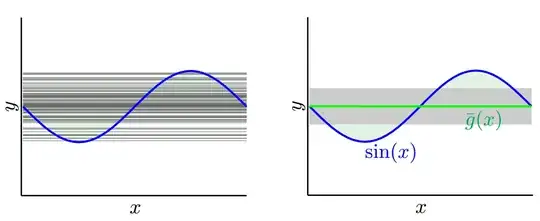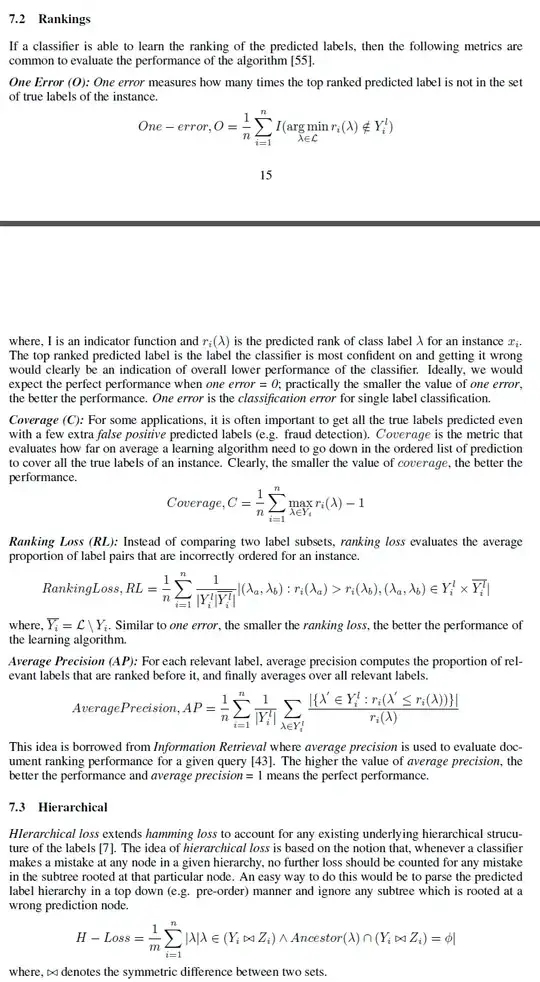Consider a scenario where you are provided with KnownLabel Matrix and PredictedLabel matrix. I would like to measure the goodness of the PredictedLabel matrix against the KnownLabel Matrix.
But the challenge here is that KnownLabel Matrix have few rows only one 1 and other few rows have many 1's (those instance are multi labeled). An example of KnownLabel Matrix is given below.
A =[1 0 0 0
0 1 0 0
0 1 1 0
0 0 1 1
0 1 1 1]
In the above matrix, data instance 1 and 2 are single label data, data instance 3 and 4 are two label data and data instance 5 is the three label data.
Now I have PredictedLabel Matrix of data instance using an algorithm.
I would like to know various measure which can be used to measure the goodness of the PredictedLabel Matrix against KnownLabel Matrix.
I can think of frobeinus norm difference between them as one of the measure. But im looking for the measure such as accuracy $(= \frac{\text{Correctly_predicted_instance}}{\text{total_instance}})$
Here how do can we define the $\rm Correctly\_predicted$ for multiple data instance?

